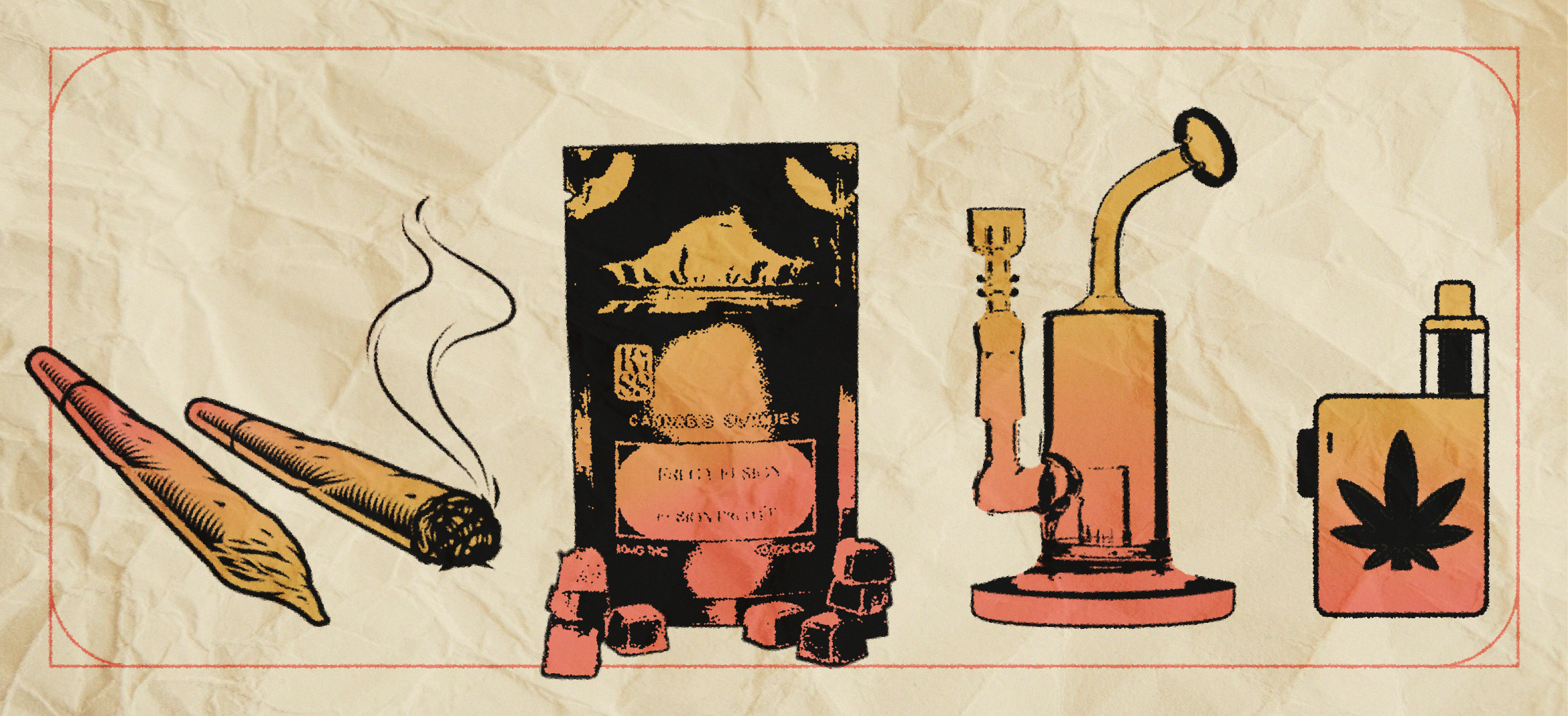How different methods of consuming cannabis affect you differently
Cannabis can be used in more ways than simply smoking it rolled in a joint. Users can use methods like smoking, vaping, dabbing, and consuming edibles to feel effects. The delivery methods are important considerations for medical marijuana patients and recreational users alike, so it’s important to learn about the different ways you can consume cannabis.
Smoking
Inhaling cannabis from a rolled joint or from a pipe or bong is arguably the oldest method of consumption. Cannabis smoke or vapour delivers THC, the chemical that gets you high, into your lungs where it travels directly into your bloodstream and then your brain. The subjective effects of smoking are likely to be felt more immediately, may peak more quickly, and ultimately last for a shorter period of time.
The reality is, although weed smoke is said to be less harmful than tobacco smoke, it’s still smoke! There is a common misconception that although smoking tobacco is bad for you, smoking marijuana isn’t. When any plant matter is combusted it produces tar, carcinogens, and other by-products like toluene, naphthalene, and benzene. This is an unavoidable consequence of smoking, which is important to understand while decided how to consume cannabis.
Vaping
Vaping devices heat cannabis to a temperature in which the effective compounds in the plant are released as a vapour that is inhaled. It’s widely considered a discrete, fast-acting and potent method of consuming cannabis, but there is much safety information one should consider. Vaping is thought to be safer for cannabis and tobacco use because it doesn’t produce many of the harmful components of burning material such as tar and other cancer-causing agents.
But, the researchers say, their study suggests that for inexperienced or occasional users, vaping delivers greater amounts of THC, which increases the likelihood of adverse reactions. Additionally, in a small study of infrequent cannabis users, Johns Hopkins Medicine researchers have shown that, compared with smoking cannabis, vaping increased the rate of short-term anxiety, paranoia, memory loss and distraction when doses were the same.
In short, though it’s possible vaping instead of smoking may be beneficial to your health in the long run, the science says it can be a powerful and unpredictable method of consumption, and there is still a large lack of studies and information on the long-term effects.
Dabbing
Dabs—also referred to as wax, shatter, amber, honeycomb, or budder—are concentrated versions of butane hash oil (BHO) which contains highly-concentrated levels of THC. This concentrated substance is produced through a chemical process using butane oil to extract the oils from the cannabis. Research suggests that dabs or BHO can have a THC concentration of 80% in comparison to traditional cannabis, which has a concentration of about 10% to 15% THC.1 In fact, at a minimum, dabs are as much as four times stronger than a joint. Plus, people consuming cannabis this way experience an intense high all at once rather than the high gradually building over time, as long as it is performed with clean, tested products. This can be desirable for experienced users, but also very dangerous.
Although some people believe that dabbing is a safer method of ingesting cannabis because the high concentration means a person needs to consume less to get high, dabs still carry their own set of dangers. In fact, one study found that dabbing can lead to higher tolerance and worse withdrawal symptoms than more traditional marijuana use alone.
It’s important to understand that dabbing does not carry the same level of risk as smoking marijuana; there is a large difference in the chemicals used in the production and consumption process that is considered more dangerous and unpredictable than traditional cannabis smoking.
Edibles
Edible cannabis is widely considered the healthiest form of consumption (and the tastiest!), but it is still important to understand the risks. Edible cannabis travels first to your stomach then to your liver before getting into your bloodstream and brain. The liver then converts THC into a stronger form and this combined with the THC from the original product adds to the intensity of the high, making it a completely different cannabis experience. Since this absorption process takes place more slowly than it does through the lungs {from several minutes to hours), the effects felt after consuming edibles will often be more gradual but may be longer-lasting. This delay can lead inexperienced users to inadvertently overconsume because they might not feel the intended effects immediately. Nonetheless, this method of consumption means users skip the harmful vapour and toxins that come with inhaling cannabis.
Start low, go slow, and always read the label.
While more research on the effects of consuming marijuana is needed, it appears we can conclude that smoking any substance — including marijuana — is generally not good for you. New research suggests vaping liquids may also be detrimental to health and can cause serious health problems. So, it seems the least harmful way of consuming marijuana may be to eat it. If you are new to consuming cannabis, start low by consuming an edible cannabis product with no more than 2.5 mg of THC. For smoking or vaping cannabis, start with a product that contains no more than 100 mg/g (10%) THC content.




